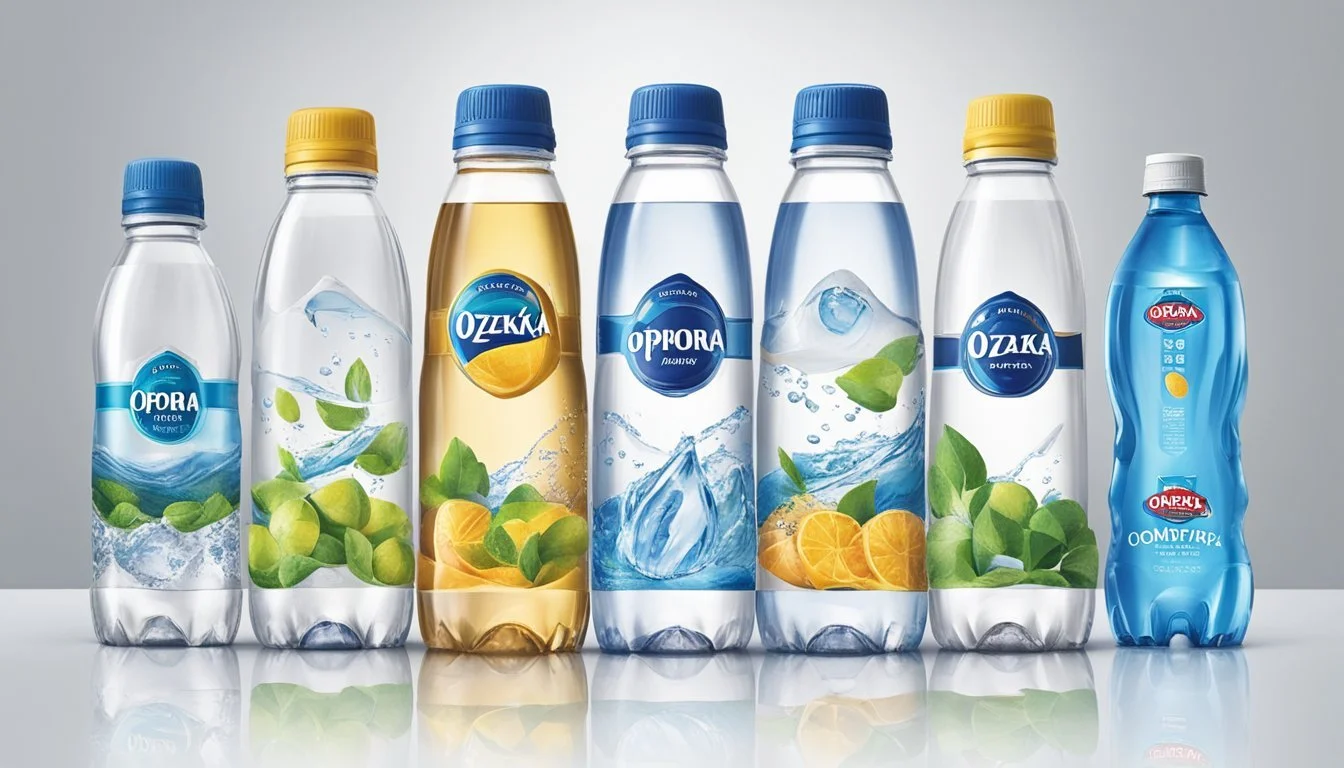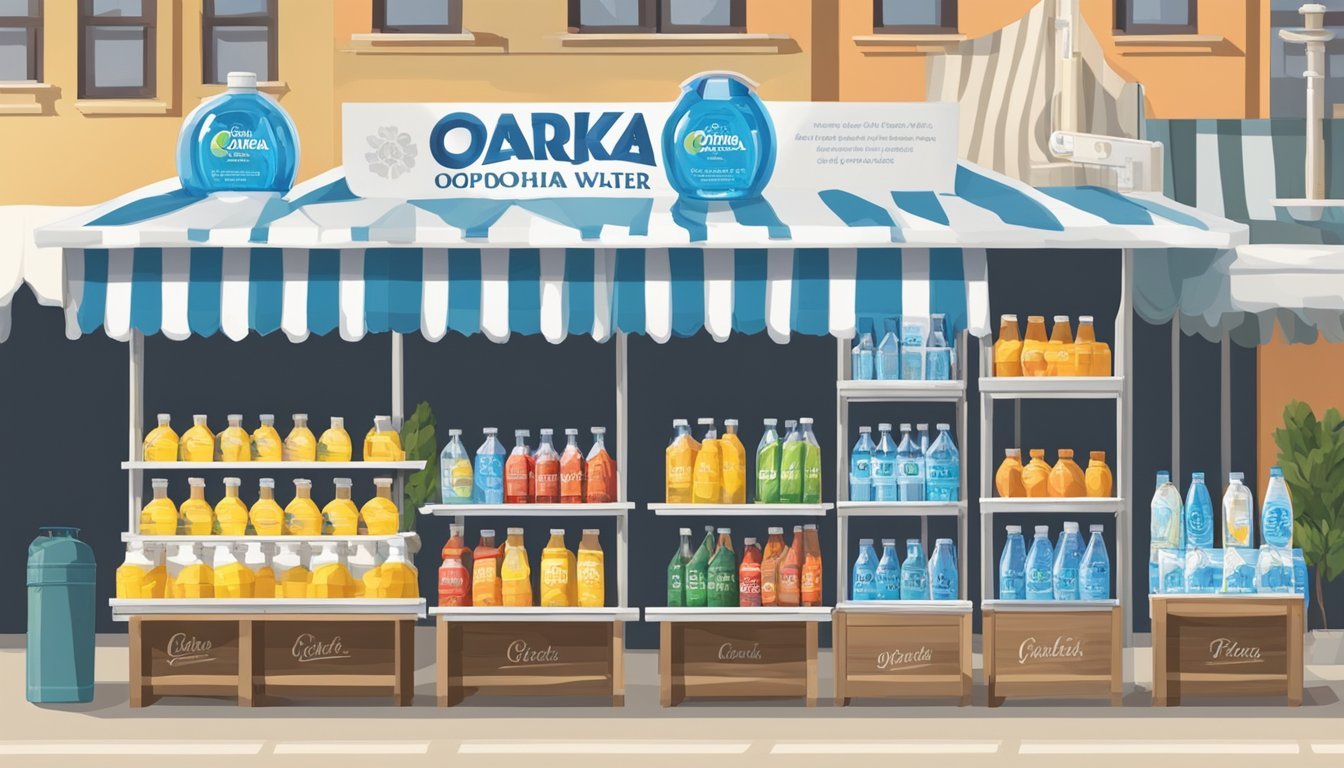Ozarka vs. Ophora
Comparing Quality and Taste
When it comes to premium bottled water, comparing Ozarka and Ophora can be quite illuminating for consumers interested in quality hydration. Both brands promise purity and great taste, but they stem from different sources and offer distinct characteristics.
Ozarka, sourced from various springs in Texas, is celebrated for its crisp taste and regional availability. On the other hand, Ophora stands out with its high oxygen content and added minerals, appealing to those seeking a more 'functional' water option. These differences might make one brand more appealing depending on the consumer's preferences for natural taste versus enhanced benefits.
To make an informed choice between Ozarka and Ophora, it's essential to consider not just the taste but also the specific benefits each brand offers. Each bottle represents a different approach to hydration, and understanding these can help you decide which water aligns better with your preferences and lifestyle.
Overview of Bottled Water Industry
The bottled water industry is a thriving global market, seeing substantial growth over the past decade. Bottled water comes in many forms, including spring water, purified water, and sparkling water.
Brands like Aquafina, Dasani, Fiji, Voss, and Evian have become household names. Each brand offers unique selling points, such as the source of their water or their bottling techniques.
Spring water brands like Poland Spring, Arrowhead, and Mountain Valley emphasize the natural and pure origins of their water. On the other hand, brands like Smartwater focus on purified water with added minerals for taste.
Sustainability and environmental impact are significant concerns in the industry. Companies like Boxed Water and Flow highlight their use of eco-friendly packaging, such as cardboard and recyclable materials, in contrast to traditional plastic bottles.
The market features significant players like Nestlé Waters, which owns multiple brands, including Nestlé Pure Life. Coca-Cola also has a strong presence with its Dasani brand.
Bottled water is often chosen for its convenience. Single-serving bottles provide a simple way to stay hydrated on the go. However, there is an increasing trend towards using glass bottles and reusable containers to reduce plastic waste.
Branding is critical in differentiating products in this competitive market. Companies use distinct packaging, advertising campaigns, and endorsements to attract consumers.
In summary, the bottled water industry is diverse, with a wide range of products catering to different preferences and environmental considerations.
Comparing Water Sources
Ozarka and Ophora distinguish themselves by the origins of their sources and the characteristics of the water they offer. The comparison begins with the distinction between natural and artificial water sources, followed by a regional analysis of each brand's sourcing locations.
Natural vs. Artificial Sources
Ozarka prides itself on its natural sources, tapping into several natural springs across Texas. These springs are part of the region’s groundwater system, providing a steady supply that rejuvenates through natural processes. The water's journey through underground rocks and sediments enriches it with minerals, contributing to its clean, natural taste.
In contrast, Ophora’s approach involves both natural and enhanced sources. Sourced initially from natural springs, Ophora water undergoes additional oxygenation and mineral enrichment processes. This meticulous enhancement aims to elevate the water's quality, focusing on physical wellness and detoxification. The use of technologically advanced methods differentiates it from purely natural sources.
Regional Water Source Analysis
Ozarka sources its water from several springs located in Texas, known for their high purity and mineral content. These springs, such as those in the Ouachita Mountains, provide naturally occurring, mineral-rich water. The regional geology, comprising layers of volcanic rock and sediment, naturally filters the groundwater, maintaining its cleanliness and beneficial mineral content.
Meanwhile, Ophora sources its water from the pristine springs of the French Alps and Tuscany. Water from these regions undergoes natural filtration through volcanic and sedimentary rock formations. These locations are famous for their pure, mountain spring water, highly regarded for its taste and health benefits. Each region's unique geology imparts distinct minerals and taste profiles to Ophora’s offerings.
Health and Purity Considerations
Ozarka and Ophora are distinct brands, each with unique qualities impacting health and purity. The comparison focuses on essential minerals, contaminants, and hydration benefits.
Essential Minerals in Bottled Water
Ozarka, sourced from springs in Texas, is known for its natural mineral content. It offers minerals like calcium, magnesium, and potassium—essential for various bodily functions. These electrolytes aid in maintaining pH levels and electrolyte balance, essential for hydration and nerve function.
Ophora, marketed as mineral-rich and possibly even alkaline water, claims to have a higher concentration of beneficial minerals. This contributes to its reputation for being beneficial for pH balance and potentially better for hydration. Evaluating the precise mineral composition of both brands can offer insights into which water is more beneficial.
Contaminants and Water Safety
Water quality and safety are critical factors. Ozarka’s rigorous sourcing methods often ensure minimal contaminants, adhering to EPA standards. Regular testing ensures no harmful heavy metals such as lead, giving it a reputation for clean drinking water.
Ophora also emphasizes purity, often touting advanced purification processes. These methods potentially reduce contaminants to undetectable levels. Their purification often includes steps like reverse osmosis, which is effective in removing both biological and chemical contaminants. Comparatively, both brands strive for superior purity, but checking their detailed water reports can clarify their effectiveness.
Hydration and Health Benefits
Hydration is essential for overall health, and both brands claim to offer superior hydration. Ozarka's natural spring water, with its balanced mineral content, supports effective rehydration after physical activities. The minerals present help replenish electrolytes lost through sweat.
Ophora, often positioned as premium mineral water, may offer enhanced hydration benefits due to its alkaline properties. Alkaline water proponents argue that it better maintains electrolyte balance and improves overall health. Thus, while both brands provide health benefits, the choice might depend on specific individual needs and preferences in mineral intake and pH balance.
Taste Experience and Sensory Evaluation
Assessing the taste experience between Ozarka and Ophora involves understanding consumer preferences and the differences between mineral and purified water. Both brands bring their unique attributes, shaping the overall drinking experience.
Consumer Taste Preferences
Consumers often prioritize different aspects of water taste, including smoothness, refreshing quality, and aftertaste. Ozarka, as a spring water sourced from Texas, is favored for its clean and crisp taste. Many appreciate its natural and slightly minerally profile, which can enhance the flavor of beverages like coffee.
Ophora, known for its high oxygen content and purification process, offers a silky smooth taste that's particularly refreshing. Consumers who prefer a more neutral flavor without strong mineral notes often choose Ophora. This makes it a popular choice for those who desire a clean, pure water experience.
Comparison of Mineral and Purified Water Tastes
Ozarka's natural spring water contains inherent minerals that contribute to its taste. These minerals can provide a slightly elevated flavor, making the water taste more natural and less processed. Some consumers find this difference particularly enjoyable when drinking water directly or mixing it with other beverages.
In contrast, Ophora's purified water goes through extensive filtration, resulting in a very clean and neutral taste. This process removes impurities and any residual flavors, providing consistency in taste. Ophora's high oxygen content can also contribute to a revitalizing sensation, appealing to those seeking a pure and invigorating drinking experience.
Ozarka captures the essence of natural spring water, while Ophora offers the refined taste of advanced purification. These distinctions cater to varied consumer preferences, each brand standing out in its own right.
Bottled Water Processing Techniques
Examining the methods by which bottled water is processed sheds light on aspects such as filtration, enhancements, and the influence of packaging on water quality.
Filtration Methods and Efficacy
Various filtration technologies are used to ensure the purity and safety of bottled water. Reverse osmosis is among the most prevalent, effectively removing contaminants by forcing water through a semipermeable membrane. This method is highly efficient in eliminating pollutants and ensuring clean water.
Some brands also utilize carbon filtration, known for eliminating chlorine and organic compounds, which enhances taste and odor. Ultrafiltration can be more selective, removing larger particles and microbiological contaminants, while maintain minerals.
Ozone treatment, an additional purification step, uses ozone gas to eliminate bacteria and viruses without leaving a chemical aftertaste, ensuring both safety and palatability.
Enhancements and Additive Processes
Many bottled water brands enhance their products to cater to specific consumer needs. Alkaline water, achieved through processes like ionization or the addition of minerals, offers a higher pH level which some believe benefits health by neutralizing body acids.
Other brands, such as those using Hydro-7 or BluTriton technology, focus on adding electrolytes for taste and potentially enhanced hydration. These processes carefully balance additives without compromising purity, aiming to meet diverse consumer preferences.
Additional minerals or vitamins are sometimes included to improve nutritional value, though these enhancements should be considered carefully based on personal dietary needs.
Packaging and Its Influence on Quality
Packaging plays a critical role in maintaining the quality and sustainability of bottled water. Recycled plastic and glass bottles are increasingly popular choices in response to environmental concerns. These materials reduce environmental impact while ensuring the water remains uncontaminated.
Glass is revered for its impermeability, preventing any interaction between the water and the environment, thus preserving taste and purity. On the other hand, advanced PET plastics are designed to be lightweight and recyclable, balancing convenience with a lower carbon footprint.
The bottling process, which includes stringent hygiene standards and sometimes nitrogen flushing, ensures the bottles are sealed in a contaminant-free environment, preserving the water's integrity.
Environmental Considerations and Sustainability
When evaluating Ozarka and Ophora, it is essential to consider their environmental impact and sustainability efforts. Key aspects involve packaging innovations and the environmental programs initiated by these water brands.
Eco-Friendly Packaging Innovations
Ozarka typically employs plastic bottles for its packaging, which often leads to concerns about plastic waste. Though some of their packaging includes elements of recycled plastic, the primary material is still plastic, which has significant environmental implications.
Ophora, on the other hand, opts for more sustainable packaging solutions. They utilize glass bottles and boxed water, both of which are considered more environmentally friendly. Glass bottles are reusable and recyclable, whereas boxed water uses mostly renewable materials.
Nestlé Waters and Ethos Water, brands associated with initiatives towards environmental sustainability, also champion the use of alternative packaging solutions. These shifts towards sustainable materials seek to minimize the ecological footprint left by traditional plastic bottles.
Water Brands' Environmental Programs
Ozarka participates in various recycling and conservation programs to mitigate its environmental impact. They have initiatives aimed at reducing plastic waste and promoting the recycling of their products. Additionally, their water sourcing procedures emphasize the sustainable management of natural springs.
Ophora takes a proactive stance by engaging in extensive environmental programs. Their efforts include projects to clean oceans, initiatives to restore marine ecosystems, and partnerships with organizations focusing on environmental conservation. By contributing to these causes, they aim to offset any environmental impact their products may have.
Other notable efforts from industry players like Starbucks's Ethos Water, and various programs under Nestlé Waters, demonstrate a commitment to sustainability. These brands often collaborate with environmental organizations to advance their sustainability goals and reduce ecological harm.
Market Standings and Consumer Choice
Ozarka and Ophora cater to different consumer bases, with Ozarka focusing on the local, everyday market, and Ophora emphasizing premium quality and wellness.
Brand Recognition and Loyalty
Ozarka, sourced from Texas, is recognized as a dependable, local choice. This branding appeals to consumers who prioritize accessibility and affordability. Ozarka often competes directly with other everyday brands like Dasani and Nestlé Pure Life.
On the other hand, Ophora markets itself as a luxury brand, often considered alongside premium names like Acqua Panna and Essentia. Ophora’s branding emphasizes purity, advanced filtration, and health benefits, attracting consumers willing to invest in high-end, ultra-purified water.
YouTube reviews and social media feedback indicate strong loyalty for both brands, but for different reasons. Ozarka customers appreciate the regional pride and consistent quality, while Ophora's consumers are drawn by its superior taste and health claims.
Alternatives to Traditional Bottled Water
Consumers seeking alternatives to traditional bottled water have a variety of options. Sparkling water brands like Perrier and LaCroix offer effervescent choices that cater to those looking for a different sensory experience.
For health-conscious individuals, Core Hydration provides balanced pH levels. Refillable options like Path offer environmentally friendly solutions, reducing plastic waste.
Some consumers also turn to innovations in at-home filtration systems or reusable bottle brands, which offer a blend of convenience and sustainability. The market also sees a rise in flavored and vitamin-enhanced waters, expanding choices beyond plain still or sparkling versions.
Conclusion
When comparing Ozarka and Ophora, several factors stand out. Ozarka is sourced locally in Texas and maintains a neutral pH level close to 7.0, making it ideal for drinking. Its pricing can vary depending on the region, but it generally offers a good balance between cost and quality.
Ophora, on the other hand, positions itself as a health-oriented premium water brand. Its specialized production process and branding allow it to command a higher price. This might appeal to consumers willing to pay more for perceived health benefits.
In terms of availability, Ozarka can be found in many local markets in Texas, making it easily accessible. Ophora may be found in upscale grocery stores and health food markets, appealing to a niche audience.
Consumer insight indicates that those who prioritize cost and local sourcing might lean towards Ozarka, while those interested in health-oriented products might prefer Ophora. Both brands offer distinct advantages depending on what the consumer values more.
More About Ozarka
Mountain Valley Spring Water vs Ozarka: Which Bottled Water is Better?
Ozarka vs Kirkland Signature: Which Bottled Water is Better?
Ozarka vs Richard's Rainwater: Which Bottled Water is Better?
Ozarka vs Whole Foods Italian Still Mineral water: Which Bottled Water is Better?






